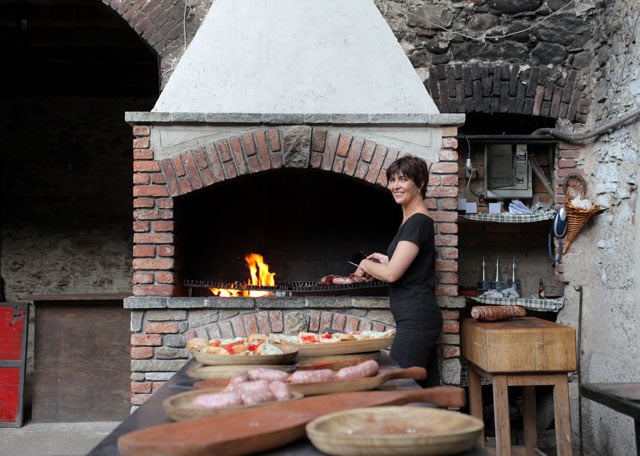
Building outdoor kitchens to cook, dine and entertain has become an increasingly popular trend in recent years. While they’re more popular in warm climates, it is still possible to enjoy in regions with snowy winters. All you need is adequate preparation and protection as well as space to store the kitchen components while they are not being used. Ideally, an outdoor cooking space should use durable construction materials that are resistant to the elements; most patio kitchens feature lots of brick, masonry, stainless steel, and tile.
In order to qualify as a true outdoor kitchen (rather than the commonly found table, seating, and barbecue grill setup), your backyard cooking space must contain the following components: counter space, storage space, a method of trash disposal, a sink, and a fire-based cooking appliance. Find the best outdoor kitchen contractors for these components and more for repairs or new construction.
The most popular fire-based appliances are grills and wood-fire ovens; many outdoor kitchens have both. Wood-based ovens take two basic forms: the traditional Dutch oven and the wood-fired pizza oven, sometimes known as a forno. A Dutch oven consists of a cast-iron container that is placed on a wood fire, typically a campfire or fire pit, and allows food to be heated slowly and evenly from all sides. A wood-fired pizza oven is usually made of metal and forms a dome or igloo shape. Pizza ovens come in a variety of sizes and can be mounted on a portable cart or placed on a masonry base that includes built-in firewood storage. Don’t let the name fool you, though; pizza ovens can be used to cook far more than just pizza.
- Cooking Wood-Fired Pizza
- How to Cook Steak Over Actual Fire
- Campfire Cooking
- Dutch Oven Camp Cooking
There is an art to building and maintaining a thriving wood fire. Whether you are building a fire for heating, recreation, or cooking, the basic principles of fire-starting are the same. One begins a fire with kindling: newspaper, finely split wood fibers, dried grass, moss, leaves, or bark are common examples of kindling. After the kindling ignites, move on to larger pieces of kindling or small sticks of wood. Finally, add seasoned firewood pieces, with the smaller cuts going in first.
Those starting a campfire may favor the bottom-up method, in which kindling is ignited, small sticks are added next in a tepee shape, then large firewood is slowly added until a fire is roaring. However, starting a fire in a large stove, such as a pizza oven, is easier with the top-down method: Load your firewood into the bottom of the stove or oven (loosely packed for a shorter fire and tightly packed for a longer one), then add large kindling, then light kindling or newspaper on the very top. Ignite the top layer, and let the fire naturally work its way down to the large pieces of wood. This way, you avoid the risk of the large pieces falling down from the top of the oven and extinguishing your fire.
It is important to note that different types of woods will yield different results when burning. Evergreen woods like pine or spruce are much smokier than other woods, which is not ideal for cooking fires. The best types of wood for cooking are generally hardwoods, such as oak, ash, and hickory. These woods burn cleanly, easily, and at a relatively high temperature. Maple, elm, cherry, cedar, and walnut are also good choices to consider.
- How to Build and Maintain a Wood Fire
- Choosing Wood for Grilling and Smoking
- Starting a Fire for Cooking Purposes
Once you have installed your outdoor kitchen and mastered the art of building and maintaining your wood fire, it’s time to cook. Before getting started, make sure to read up on basic fire safety tips and the health and environmental effects of fires. You should also be aware of any local laws and ordinances concerning the types of fires allowed on residential properties. While wood-fire ovens are almost always allowed, many localities impose temporary or permanent bans on open fires such as fire pits or campfires.
There are lots of resources online for learning handy tips and techniques for grilling, frying, and baking with wood fires, and it’s useful to do a little research before you start cooking. To use the most familiar example, grilling is different when done over a wood fire as opposed to the more ubiquitous charcoal briquettes or a gas-fueled heat source. Typically, wood-fire grilling and cooking over campfires involves cooking with coals and cinders, after the firewood has burned down, and/or using indirect heat to cook with convection. A pizza oven involves more direct use of heat and takes far less time. It may take some experimenting before your favorite recipes come out exactly how you want them, but don’t get discouraged. Cooking with fire can be a complicated and somewhat delicate process, but practice makes perfect. With time, you’ll be able to cook over wood fires like a pro!
- Mistakes to Avoid When Cooking Over an Open Fire
- Grilling With Wood
- Techniques for Wood Fire Cooking
- Outdoor Fire Safety Tips
- Wood Fires: Health and Environmental Tips
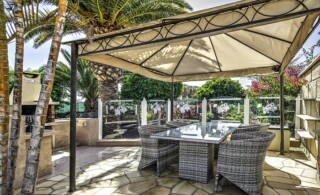 Planning the Perfect Outdoor Kitchen
Planning the Perfect Outdoor Kitchen 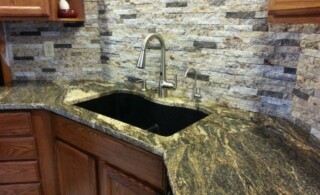 Corner Bathroom and Kitchen Sinks
Corner Bathroom and Kitchen Sinks  Spring Garden Flower Tips and Suggestions
Spring Garden Flower Tips and Suggestions 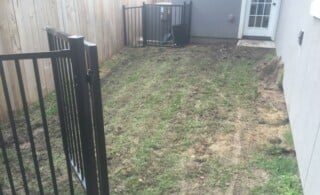 Plan Ahead for a Better Yard
Plan Ahead for a Better Yard 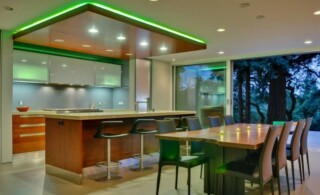 Green Kitchens
Green Kitchens 

Are You Familiar With This Topic? Share Your Experience.